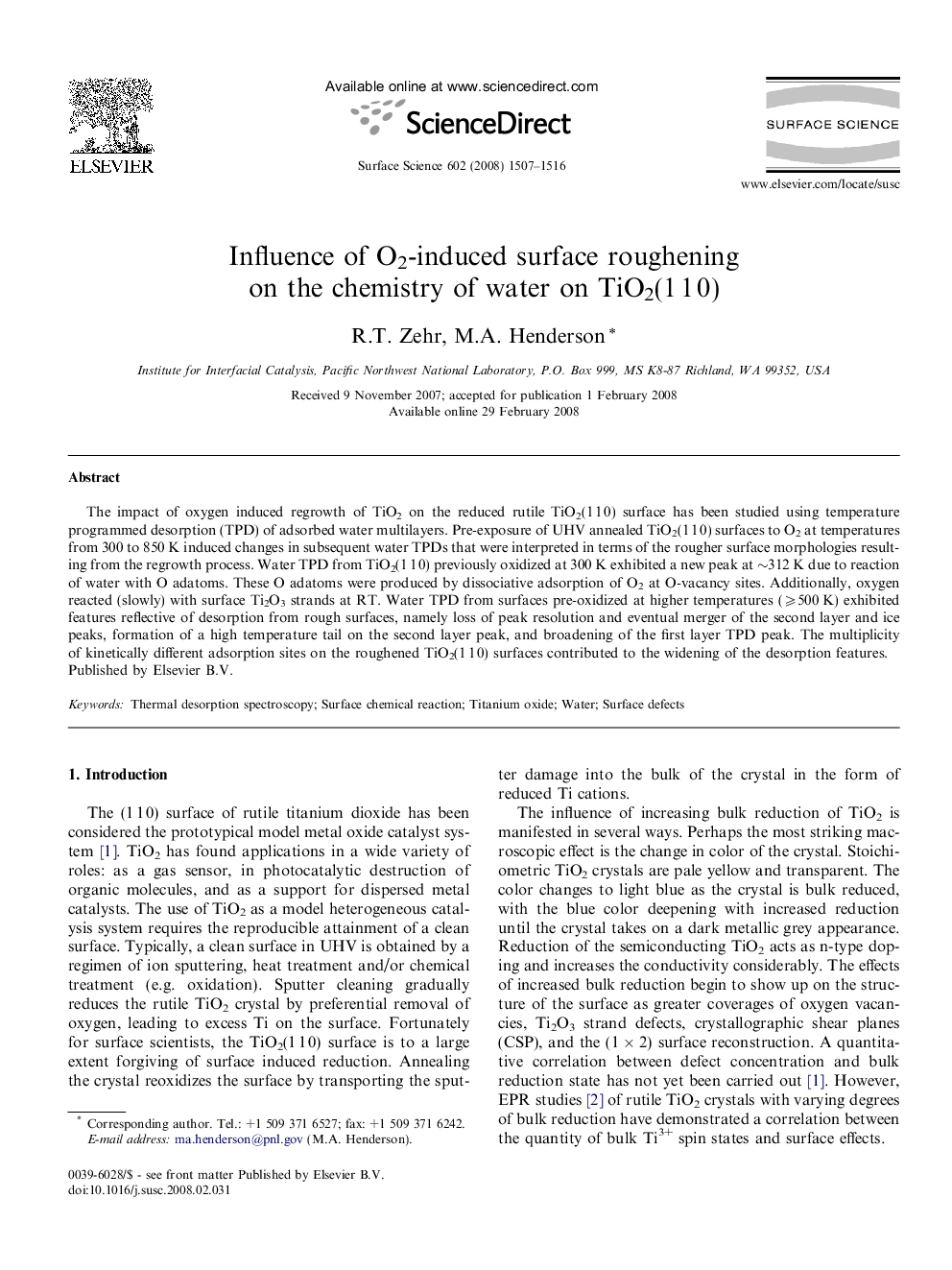| Article ID | Journal | Published Year | Pages | File Type |
|---|---|---|---|---|
| 5424827 | Surface Science | 2008 | 10 Pages |
Abstract
The impact of oxygen induced regrowth of TiO2 on the reduced rutile TiO2(1 1 0) surface has been studied using temperature programmed desorption (TPD) of adsorbed water multilayers. Pre-exposure of UHV annealed TiO2(1 1 0) surfaces to O2 at temperatures from 300 to 850 K induced changes in subsequent water TPDs that were interpreted in terms of the rougher surface morphologies resulting from the regrowth process. Water TPD from TiO2(1 1 0) previously oxidized at 300 K exhibited a new peak at â¼312 K due to reaction of water with O adatoms. These O adatoms were produced by dissociative adsorption of O2 at O-vacancy sites. Additionally, oxygen reacted (slowly) with surface Ti2O3 strands at RT. Water TPD from surfaces pre-oxidized at higher temperatures (⩾500 K) exhibited features reflective of desorption from rough surfaces, namely loss of peak resolution and eventual merger of the second layer and ice peaks, formation of a high temperature tail on the second layer peak, and broadening of the first layer TPD peak. The multiplicity of kinetically different adsorption sites on the roughened TiO2(1 1 0) surfaces contributed to the widening of the desorption features.
Related Topics
Physical Sciences and Engineering
Chemistry
Physical and Theoretical Chemistry
Authors
R.T. Zehr, M.A. Henderson,
